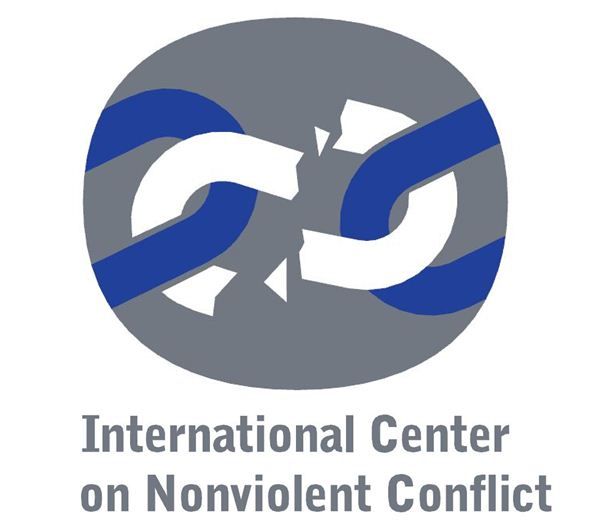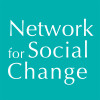You are here
Australia
Discusses Australia’s decision to hold a national inquiry into workplace sexual harassment as part of the government’s response to the ‘Me Too’ movement.
This issue is focused on the roles of long established environmental NGOs (ENGOs), which often act as lobbying and advocacy groups seeking to influence government policy, and the potential of more radical campaigning groups. The introduction examines the implications of both approaches, as well as possible relations between ENGOs and protest movements. Other articles explore the role, strength and weaknesses of specific organizations, such as Friends of the Earth, and the problems as well as the benefits of transnational mobilization (as at the 2015 Paris Climate Summit). Topics covered include: an assessment of the effectiveness of transferring the US model of using the law to promote public interest environmental concerns to a European setting; the expansion of ENGOs in France; and a discussion of how to avoid conflicts of interest between indigenous peoples (concerned about economic opportunities) and environmental activists in Australia.
Introductory article by Amy Hall summarises the growth of BLM in the USA, discusses its global potential and spread to other countries, and notes the relevance of BLM in the UK. Jamilah King comments on the US movement, both on its strengths and the divisions within it. Other articles examine how BLM relates to a history of 'a policy of black extermination' in Brazil, and to the struggle by Aboriginal people in Australia.
Covers the demonstrations by school children and students in an estimated 185 countries with a photo of a protest in Nairobi, Kenya, and an overview of the protests in their environmental and political context. Coverage also includes brief statements from young activists in Australia, Thailand, India, Afghanistan, South Africa, Ireland and the US; the speech by Greta Thunberg to the UN Climate Action summit in New York; and 10 charts explaining the climate crisis.
See also: Milman, Oliver, 'Crowds Welcome Thunberg to New York after Atlantic Crossing ', The Guardian, 29 Aug. 2019, p.3.
Reports on Thunberg's arrival in New York where she was to address the UN Climate Action summit on reaching zero carbon emissions.
Report on the Australia response to the emergence of the #MeToo movement.
Brief account celebrating victory after years of campaigning by Indigenous Climate Action against Teck Resources, the company pressing for permission to build the tar sands Frontier Mine in Canada, which would have produced 3.2 billion barrels of oil over 40 years. Teck withdrew early in 2020, after 12 years of lobbying (indigenousclimateaction.com). The journal also reports very briefly that the Great Australian Bight Alliance, led by Aboriginal elders and local activists has in succession prevented Chevron, BP and (most recently) Equinor to abandon plans to drill for oil in the Bight (fightforthebight.org.au.)
Explores the rise of Black Lives Matter protests in Australia in solidarity with the international response to the death of George Floyd, and also to highlight the long running tragedy of Aboriginal deaths in custody.
See also: Allam, Lorena and Nick Evershed, ‘The killing times: the massacres of Aboriginal people Australia must confront’, The Guardian, 3 March 2019.
Special report on the killing, incarceration and forced removal from their land of Indigenous Australians over 140 years. The article offers an interactive map that shows the locations and date of massacres between 1794 and 1928.
See also: Dovey, Ceridwen, ‘The mapping of massacres’ The New Yorker, 7 December 2017.
https://www.newyorker.com/culture/culture-desk/mapping-massacres
The article reports on how historians and artists turned to cartography to record the widespread killing of Indigenous people in Australia.
The Guardian spoke to six young indigenous activists from the Ecuadorian Amazon, Chad, Alaska, Sweden, Indonesia and Australia about what they think about COP 26.
General analysis, includes some references to protest.
Addresses how photography (using photographs taken in the USA and Australia) can illuminate the unimaginable, namely nuclear catastrophe, in order to fuel the imagination in the search for alternatives that lead to a world free of nuclear weapons.
Explores high carbon footprint of military defence, argues for an alternative nonviolent defence, and advocates ‘active resistance’ of kind pioneered by Australian environmentalists.
See also Burgmann, Verity , Power, Profit and Protest: Australian Social Movements and Globalization Crows Nest NSW, Allen and Unwin, , 2003, pp. 393 .
On the initiation of ‘green bans’ – work bans by unions to prevent redevelopment of working class neighbourhoods and destruction of historic buildings and urban green spaces in Sydney. Between 1971 and 1974 42 separate bans were imposed and linked unionists with middle class conservationists. See also: Mundey, Jack , Green Bans and Beyond Sydney NSW, Angus and Robertson, , 1981
On the 1980s revived movement against nuclear weapons, in particular Australia’s People for Nuclear Disarmament.
On Australia. It includes some references to protests.
The widespread problem of sexual harassment has made headlines around the world, including in political legislatures. Using public reports of sexism and sexual harassment, the authors highlight these problems in three countries: Canada, the United Kingdom, and Australia. Although sexual harassment is a global issue, the aim of this article is to show how the shared rules, practices, and norms of these Westminster-style bodies perpetuate sexist cultures that produce unequal and unsafe work conditions for female politicians. The findings highlight some of the unique challenges women face in their representational and policy-making roles.
Survey from early concerns about conservation through the ‘second wave’ 1945-72, and the campaigns of 1973-83 up to the subsequent professionalization of the movement. Chapter 4 ‘Taking to the Streets’ covers ‘green bans’ and the anti-uranium campaigns; ‘Taking to the Bush’ looks at direct action on a number of issues, culminating in the 1982 blockade of the Franklin Dam; and Chapter 6 ‘Fighting for Wilderness’ assesses further protests around Australia. Chapter 8 considers the role of the Green Party.
See also: Milburn, Caroline , Australia: Women at forefront of Jabiluka resistance The Age, 1999
The Anzac legend has been traditionally dominated by white males and was increasingly brought under the spotlight with the emergence of feminist movements from the 1960s onwards. But it is was feminists that rekindled interest in Anzac in the 1980s with the Women Against Rape in War protests at Anzac Day events in the early 1980s. The Second Wave Feminist movement in the 1960s and 70s saw a significant shift towards a more specific focus on issues around violence against women, most particularly in the realm of domestic/family violence. The Australian feminist movement also opposed the Australian involvement in the Vietnam War and promoted the cause of nuclear disarmament.
Explores theoretical arguments for and against selective objection, together with case studies from US, Britain, Australia, Germany and Israel.
Discusses role of corporations and governments in different parts of the world. Chapters 8-12 focus on resistance in Bougainville, the Philippines and Australia. Chapter 12 (pp. 195-206) covers the resistance to the Jabiluka uranium mine by the local Aboriginal people, supported by environmentalists.
Covers women’s political rights across all major regions of the world, focusing both on women’s right to vote and women’s right to run for political office. The countries explored are Afghanistan, Armenia, Australia, Bolivia, Canada, Cameroon, Chile, China, Colombia, Cuba, Czech Republic, Finland, France, Ghana, India, Indonesia, Israel, Jordan, Kenya, Kuwait, Malaysia, Mauritius, Mexico, Mongolia, Morocco, New Zealand, Myanmar, Niger, Nigeria, Poland, Russia, Rwanda, Slovenia, Sri Lanka, Sweden, South Korea, Slovenia, Switzerland, Taiwan, Tunisia, Turkey, the United States, Uganda, Uruguay, and Zimbabwe.
Explores the diverse meanings of community unionism, provides case studies from the UK – the ‘London’s living wage’ campaign, and activism by black and minority workers and migrant workers – and from Japan, Australia and the US.
Covers ‘Stop Jabiluka’ campaign by Aborigines and environmentalists in Kakadu National Park.
This paper examines the role and contribution of antinuclear and civil society efforts to establish a regional nuclear free zone in the period up to the signing of the 1985 South Pacific Nuclear Free Zone (SPNFZ) Rarotonga Treaty. The Treaty negotiated under the auspices of the South Pacific Forum (now Pacific Islands Forum), the regional organization of independent South Pacific island states, Australia and New Zealand. The antinuclear campaigns that led up to and contributed to the negotiation of the Treaty began some 25 years earlier and may be divided into three broad waves.
Compares Australia and Canada
This is the second volume of the history of the direct action movement launched by radical Catholics in the USA, whose tactics were taken up by Protestants and committed advocates of disarmament in both the US and Europe. Protests have over the years been directed at a range of ICBMs designed to carry nuclear warheads, Trident submarines, and nuclear weapons plants. This volume, which includes individual accounts and information on trials of protesters, covers actions not only in the US, but in Australia, Germany, the Netherlands, Sweden and the UK.
Chapter on ‘Donald Macleod and Australia’s Aboriginal Problem’, pp. 174-89 covers Pilbara strike and Pindan movement of late 1940s.
This book examines the development and evolution of the Plowshares movement from a social science perspective, looking at issues such as ‘tactical legitimation’ and sustainability in relation to the US movement, and also analyzing ‘intermittent resistance’ in the German, Dutch and Australian movements, and ‘internal implosion’ in the Swedish movement. It also assesses the UK movement.
Reports on a new app, created by the Sydney-based National Justice Project, that enables Aboriginal people to record police discrimination and violence against them. It is being adopted across Australia. The author sets this Australian initiative in the context of disproportionate jailing of Aborigines and frequent police discrimination, as well as the wider global movement to use film to highlight police injustice, with examples from the USA and Canada.
Statements by two anarchists in the draft resistance movement, who went underground and then to jail, commenting critically upon it. An introduction by Takver notes the important role played by individual anarchists and anarchist groups in the anti-war movement.
International law has expanded significantly to encompass abuse of women’s rights, as a result of pressure from international civil society. There is now strong support for recognising violence against women as a human right issue. But attempts by women’s groups to promote consensus on reproductive rights, especially the right to safe access to abortion, have met with strong opposition or conservative religious bodies at both an international and local level. This article includes a case study of local direct action in Australia against access to abortion, and also a wider evaluation of the impact of anti-abortion protest groups on women’s rights. It also examines how far legislation to limit anti-abortion activism in designated areas is effective, and how far such legislation is consistent with international norms and feminised international laws.
Pittock, a well known Australian climate scientist, examines the scientific evidence for climate change, including new evidence in the 2007 Fourth IPCC Assessment Report of the rapid melting of arctic sea ice. He also covers the possibilities of investment in renewable technologies, and examines the role of the (in 2009) recently elected Australian government.
In three Parts: 1. ‘Fear and Morality’, 2. ‘(Mis)trust of Medicine, 3. ‘Grief and Activism’.
Provides historical background and uses interviews with members of early AIDS Councils and covers role of ACT UP.
Perkins has been one of the leading activists in New South Wales and his role in leading protests is described in some detail.
This is an acadmeic contribution to memory studies, but shows how preserving knowledge and stories of past movements affects present politics, and how nonviolent activists can learn from past campaigns. Examples examined include the suffragettes, Greenham Common, Polish Solidarity, US struggles against racism and Australian aboriginal campaigns. The authors also illustrate how one movement can influence others and stress the need to make archival and other sources (films, music, etc.) available.
This book, edited by the international coordinator of Ecologistas en Accion, covers 15 varied struggles against fracking around the world, and is intended to be a source of inspiration for continued resistance. Many are first person accounts, by those involved. Chapters cover personal opposition fracking in the courts or at the municipal level, resistance by local farmers to corporations backed by the government, as in Poland and Romania and the campaign for 'frack free' municipalities in the Basque territory of Spain. There are also accounts of resistance from Argentina, Algeria, South Africa, Australia, the UK (against drilling in Sussex) and Northern Ireland, and on the role of ATTA C in France. Includes a timeline and 'some snapshots' of the resistance, as well as some conclusions drawn by the editor.
Compares Australian and US environmental activism in relation to their political and social context.
The author, an active socialist, argues contrary to widely held views that the left and working class supported earlier gay rights campaigns and that the left is central to Gay Liberation.
Studies cover Peru, India (Orissa), Philippines, Nigeria (the Niger Basin), Chad and Cameroon, as well as Australia and Canada.
The authors examine how restrictive policies force women to travel both within and across national borders in order to reach abortion providers, often at great expense, over long distances and with significant safety risks. Contributors, who adopt both historical and contemporary perspectives, examine the situation culturally and politically diverse in regions that include Australia, Canada, Eastern Europe, Ireland, New Zealand, Poland, Prince Edward Island, Spain, Sweden, Texas, and post-Brexit referendum UK.
The University of Auckland hosted a panel in September 2018 on preventing and responding to sexual assault and harassment on university campuses. The panel was organised by the Australian and New Zealand Student Services Association (ANZSSA), and included speakers from the University of Sydney and Universities Australia. Australian universities had launched a coordinated effort to address campus sexual assault and harassment in February 2016, and this panel served as a space for sharing their experiences and for Auckland staff and students to learn from them.
This volume investigates different abortion and reproductive practices across time, space, geography, national boundaries, and cultures. The authors specialise in the reproductive politics of Australia, Bolivia, Cameroon, France, ‘German East Africa,’ Ireland, Japan, Sweden, South Africa, the United States and Zanzibar, and cover the pre-modern era and the nineteenth and twentieth centuries, as well as the present day. Contributors draw on different theoretical frameworks, including ‘intersectionality’ and ‘reproductive justice’ to explore the very varied conditions in which women have been forced to make these life-altering decisions.
An Australian case study.
See also his MA thesis: Summy, Ralph V., Militancy and the Australian Peace Movement: A Study of Dissent Sydney, MA Thesis, University of Sydney, , 1971, pp. 273
Account of gay and lesbian activism in Australia, from 1950s to 1990s, its successes and contribution to Australian society.
Indigenous women from Australia, Aotearoa (New Zealand), Belau, Bougainville, East Timor, Ka Pa’aina (Hawaii), the Marshall Islands, Te Ao Maohi (French Polynesia) and West Papua (Irian Jaya) condemn imperialism, war, ‘nuclear imperialism’ (in the form of nuclear tests) and military bases in the hope ‘that when people around the world learn what is happening in the Pacific they will be inspired to stand beside them and to act’. The book is a contribution to the Hague Appeal for Peace, 1999.
A Guide to Civil Resistance
Volume One
Volume Two
 The online version of Vol. 1 of the bibliography was made possible due to the generous support of the International Center on Nonviolent Conflict (ICNC). ICNC is an independent, non-profit educational foundation that develops and encourages the study and use of civilian-based, nonmilitary strategies aimed at establishing and defending human rights, democratic self-rule and justice worldwide.
The online version of Vol. 1 of the bibliography was made possible due to the generous support of the International Center on Nonviolent Conflict (ICNC). ICNC is an independent, non-profit educational foundation that develops and encourages the study and use of civilian-based, nonmilitary strategies aimed at establishing and defending human rights, democratic self-rule and justice worldwide.
For more information about ICNC, please see their website.
 The online version of Vol. 2 of the bibliography was made possible due to the generous support of The Network for Social Change. The Network for Social Change is a group of individuals providing funding for progressive social change, particularly in the areas of justice, peace and the environment.
The online version of Vol. 2 of the bibliography was made possible due to the generous support of The Network for Social Change. The Network for Social Change is a group of individuals providing funding for progressive social change, particularly in the areas of justice, peace and the environment.
For more information about The Network for Social Change, please visit their website.










 esistance.info
esistance.info

